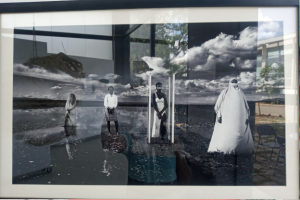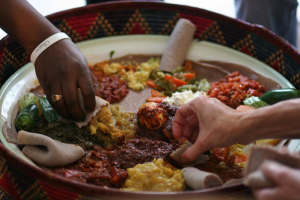
In the previous article entitled African STIWA in African women leaders’ experiences, I have mentioned the notion of African STIWA and I picked up three core points to mirror the political experiences of two African prominent leaders. The fourth idea that is raised in the theory is the relevance of African women’s involvement in social transformation.
The proposer of the theory Ogundipe-Leslie underlined that for the transformation of the continent both men and women are equally important. Since by its nature African feminism is accommodative, it entertains the two sexes equally for inclusive transition and harmony. She argued that unless the two involved fairly at every sphere, sustainable transition is impossible. Now, the debatable issue is what will happen if women are included in a certain leadership position and empowerments. The fewest women who came across to positions and empowerments have a say and a practical response for the raised question.
The former Malawi President Joyce Banda was asked why it is necessary to have women leaders in Africa. Here is her reply. “I have been a leader myself. So I can say without any fear of contradiction that we are better leaders. We mobilize and work together and create a network for the benefit of the people that have given us the mandate to serve them.” She was confident in the efficacy of the women in bringing transformation. She said this based on what she and the former Liberian president did during their leadership period.
As Joyce Banda and other women leaders and even certain researches and reports revealed, the basic challenge for African women to take leadership positions and empowerment is patriarchy and shortage of resources. Though the women could win the patriarchy strategically, the scarce resources are a great obstacle that dragged her down. Associations and supportive institutions could play a significant role in enhancing women’s capacity forward. Joyce Banda and Ellen Jonson were taking the position with the financial and training facility of an organization called African Women’s Fund. Joyce said, “They supported Ellen Jonson and me. Then when Ellen became president, she formed Allen’s Market Women’s Association and mobilized over one million women. When I became president, I formed Joyce Banda Spa Foundation, and I mobilized over 1.3 million women … .so you see the multiplier effect when women became leaders.”
These two presidents founded organizations that did support and train fellow women and young leaders. The logic is, women are relatively very close to the societies’ problems, concerns and hopes because they have gone through and experienced their socio-cultural reality with greater attachment than the male one. Thus, when they get the positions which enable them to utilize resources and powers; the primary issue that they took over is the issue of women and the society too. These women activated millions of people and showed visible impacts on society.
“Women leaders mobilize women leaders. They work together. Women leaders reach out and support others. Women leaders perform. Women leaders take risks. Women leaders fight corruption.” Joyce was bringing her experience while she was mentioning corruption. “I mention corruption deliberately because it is very hard in Africa. I was advised by my male colleagues. They were saying ‘just cover it up. You can never win. They could fight you back. You are fighting very strong people. I said well then…since I love the people I serve, I will not steal from them and I will not want anybody to steal from my people or to exploit them. I went ahead and arrested 72 people.”
This deed of Joyce Banda had a multiple implication and impact in the society, I believe. The primary implication is it stays a tangible portrayal of women’s potential, concern and commitment for all women of Africa. It again approves the philosophy of the say that ‘teaching females is teaching the society but teaching the male is teaching an individual.’ This is said because though she was informed that the people she planned to fight are very strong, she decided to face them since the ordinary people were her primary concerns rather than her positional challenge.
As it is mentioned above, women’s foremost problem is directly or indirectly stemmed from resource scarcity. Resources could be financial related matters and limited access to information, thus if women get free of these traits, they could contribute more for their family and community they emerge from. They could drop a valuable thing to the people that evoke societal transformation in many aspects. The following is an Ethiopian woman who is found to be the best instance for the raised idea. Though she is not in a governmental leadership position, she is empowered in knowledge and economy. These two basic inputs of the woman did enable her to consider her community’s harmful socio-cultural practices.
This woman is Bogalech Gebre (PhD). Bogalech was a remarkable woman who had been through patriarchal ideology and injurious cultural practices of the society. She was from Kambata Tambaro Zone which is located in the southern part of the country. As she narrated her story at the stage which was once organized by Wilson Center, she said that she was obliged to pass through lots of challenges as a female and underdeveloped girl. Even though she was away from that area and was leading a good life abroad, she never ignored her community to stay with that seductive custom. This damaging drill is the practice of female genital mutilation and bridal abduction which terminated girls’ education and left them with lasting health problem.
As she stressed it in the documentary which was prepared for the audiences, she succeeded in her study and started leading a luxurious life in America. Here are her words. “Having grown up in a condition I have experienced what I have experienced. Having been given the opportunity I was given, which is a miracle by itself to go from this place. To go through Israel and America and be in California at that in Santa Monica jog every day. Go to Spa … you know, unquestionably unacceptable that I would not do something to change the life of the girls of my neighbor or my country. If I could, I would start in a place where I know the people, I know the culture, I know the faces, I know the language and I know the problem.” But she was not satisfied. She worried on how to change her people’s perception and practice on the subject. She decided to be part of the solution practically. She planned to form an organization that aimed at combating the problems of women genital mutilation and bridal abduction. She established an association called Kembatti Mentti Gezzima (KMG).
This organization has an aim of freeing women from all forms of discrimination and violence which is approved by the socio-cultural reality of the society. It primarily focuses on changing the predisposed attitudes of the society through influential approaching mechanisms. As she knew the background and culture of these people, the mechanism she devised was successful as was the reason to won a prize at its end.
Through social mobilization and community conversation, the organization has succeeded in helping the elderly women realize the meaning of women’s organ elimination and its health related impacts. Then, these informed elders could first stop executing the custom on their daughters and be agents to alert the community too. But in schools, the organization has helped the girls first and the assisted girl will be the source of the family in return.
She explained how the organization was operating. She said, “Mothers, whom we have helped their children, first by providing school materials and uniforms for each family. We started helping one child… We build an asset for that family. We help that family to generate their own income, their own assets; so that they continue to teach the society to send their children to school; not only one child. They are organized when operating in areas. They are comfortable with that. They trade grain. They trade cows or whatever the market is.” Dr. Bogalech was cautious on the relevance and meaning of education. She centered her project on schools since schools are crucial to bring people to logical reasoning. That was a long journey. But for an immediate improvement, she approached the society at certain ceremonies and gatherings. That appeal did great to achieving her goal. Thus, one can say that the organization has been working on women’s economic opportunities, education and gender norms which are the very controversial issues of the society and the continent at large.
In its 10 years’ experience, KMG had assisted the community to prevent the harmful practice of female genital mutilation; and in turn, the practice had dramatically reduced in the area. According to a study conducted by UNCEF regarding female genital mutilation in this zone after the mobilization program of her organization, the trend has decreased from nearly 100 percent in 1999 to less than 3 percent in 2008.
This remarkable effort of the woman had enabled her to win the 2012-2013 King Baudouin African Development Prize.
For this incredible achievement, her sympathy, care, cautiousness, smartness and organization as a woman, I believe, were very significant. A single woman who is empowered financially and mentally did shine for the mass and beautify the destiny of the dominant.
Let me borrow Dr. Bogalech’s concise but complete expression as a closing remark. “Change takes commitment, not a miracle.”
BY MEKDES TAYE (PhD)
THE ETHIOPIAN HERALD THURSDAY 4 JULY 2024





